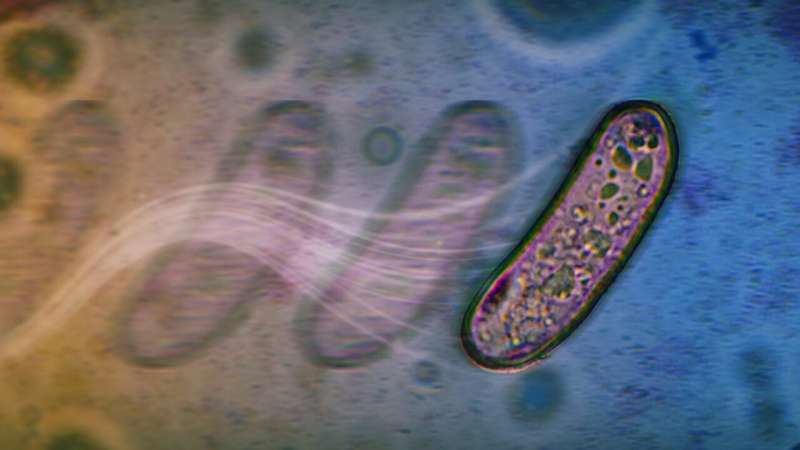
Recent research from Arizona State University has unveiled unexpected mechanisms through which bacteria can navigate their environments without the aid of flagella, the typical whip-like appendages that facilitate movement. This discovery could have significant implications for understanding bacterial behavior and developing new strategies to combat infections.
In the first study, led by researcher Navish Wadhwa, findings revealed that both Salmonella and E. coli can traverse moist surfaces even when deprived of their flagella. Instead of relying on traditional swimming methods, these bacteria utilize a process termed “swashing,” where they ferment sugars and generate tiny outward currents on wet surfaces. This movement resembles leaves drifting along a gentle stream, allowing bacteria to migrate effectively and potentially colonize medical devices, wounds, and food-processing surfaces.
Wadhwa expressed surprise at the bacteria’s ability to move without functional flagella. “Our collaborators originally designed this experiment as a ‘negative control,’ expecting no movement from the flagella-less cells,” he stated. “Instead, the bacteria migrated with abandon, prompting us to explore how they accomplished this.”
The study has been published in the Journal of Bacteriology, where it has been selected as an Editor’s Pick due to its groundbreaking nature. The research highlights that when these bacteria metabolize sugars like glucose, they produce acidic by-products that create currents, pushing them outward. The presence of fermentable sugars is crucial for this movement, indicating that environments rich in these nutrients may facilitate bacterial spread and infection.
Wadhwa’s research also found that the introduction of surfactants—detergent-like molecules—halted the swashing process, suggesting that swashing and swarming (the coordinated movement powered by flagella) operate under different physical mechanisms. This distinction implies potential strategies for selectively controlling bacterial movement, which could be valuable in medical and food safety contexts.
Understanding this new mode of bacterial mobility is essential, as it highlights that flagella inhibition alone may not suffice to prevent bacterial colonization. Instead, modifying the local chemical environment, such as altering pH or sugar availability, may offer more effective means to limit infections.
In a second study, Abhishek Shrivastava and his team focused on a different type of bacteria called flavobacteria. Unlike E. coli, flavobacteria do not swim; they navigate their surroundings using a mechanism known as the type 9 secretion system (T9SS), which propels an adhesive-coated belt around the cell, allowing it to glide across surfaces.
The research elucidated the role of a protein called GldJ, which acts as a molecular gear-shifter, controlling the direction of movement. When a small portion of GldJ was deleted, the bacteria changed direction, illustrating a sophisticated method for navigating complex environments.
Both studies underscore a shared theme: bacteria have evolved multiple strategies for movement and colonization. The ability of bacteria to adapt their methods complicates efforts to control bacterial infections. Traditional approaches have primarily targeted flagella, but these findings suggest that bacteria can thrive through alternative routes.
The implications of these discoveries are significant for human health. Misguided assumptions about bacterial movement may lead to ineffective treatment strategies. The need to consider environmental factors such as sugar levels, pH, and surface chemistry is increasingly apparent. Furthermore, disrupting the T9SS could prevent bacteria from moving and from secreting harmful proteins, offering a dual approach to combating bacterial infections.
As Wadhwa concludes, “Even when we think we’ve got something figured out, there are often surprises waiting just under the surface.” This ongoing research highlights the importance of continual exploration in the fight against bacterial diseases and the need for innovative approaches to infection control.






